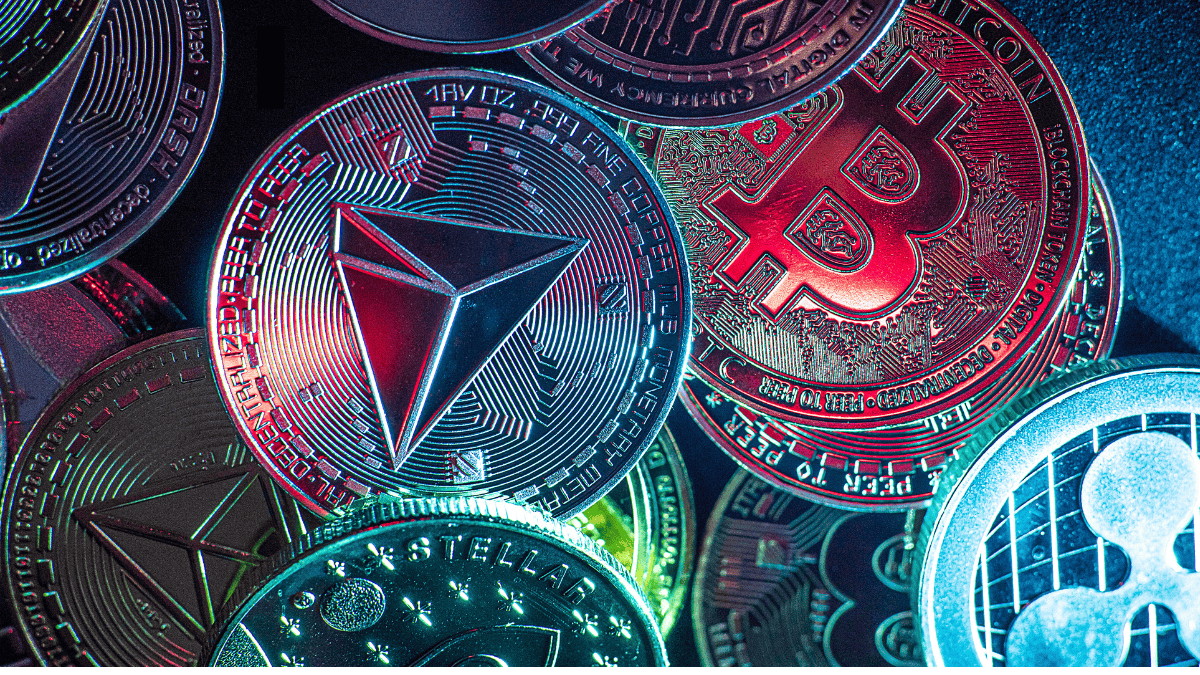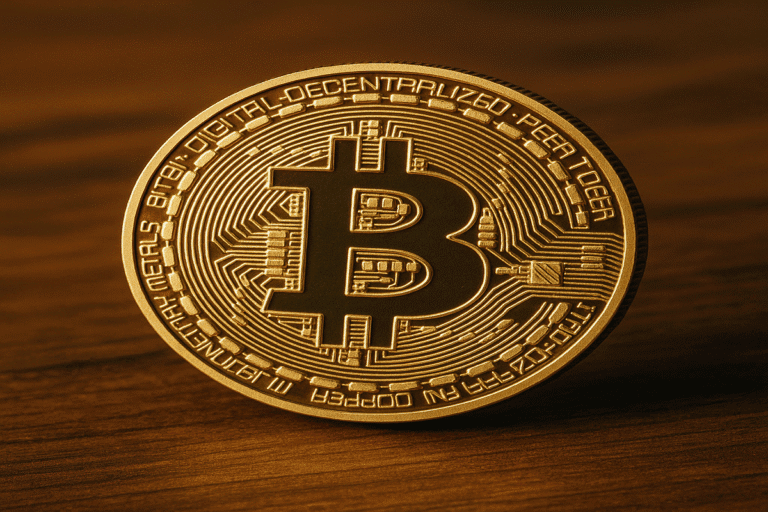Montana’s Leading the Way: How Real Estate Tokenization is Transforming Property Investment (And What It Means for You)

Imagine being able to own a piece of that beautiful $2 million property in Whitefish for just $1,000. Or picture unlocking the equity in your Bozeman home without taking out a second mortgage or selling. That’s the power of real estate tokenization.
Here’s how it works: Real estate tokenization converts property ownership into digital tokens stored on digital ledger technology/blockchain networks. These tokens represent fractional ownership stakes that can be bought, sold, and traded much faster than traditional real estate transactions – often in minutes rather than the months we’re used to.
A practical example: A $10 million commercial building in downtown Billings could be divided into 10,000 tokens at $1,000 each. Investors can buy as few or as many tokens as they want, owning proportional rights to rental income and property appreciation.
The Numbers Tell an Incredible Story
The real estate tokenization market is exploding, and the projections are staggering:
Market Growth Statistics:
- 2024 Market Size: $3.5 Billion globally
- 2033 Projection: $19.4 Billion at a CAGR of 21%
- Alternative projection: Deloitte forecasts $4 trillion by 2035, growing at a compound annual rate of 27%
- By 2030: ScienceSoft predicts tokenized real estate to hit $3T by 2030, representing 15% of global real estate under management
Investor Adoption:
- 80% of high-net-worth investors and 67% of institutional investors already invest or plan to invest in tokenized assets
- As of June 2024, 12% of real estate firms globally had already implemented, and another 46% were piloting some asset tokenization solutions
- 67% of investors have already invested or are planning to invest in asset tokens, with more than half of them citing real estate as their second most preferred tokenized asset class
Real-World Success Stories
Propy: Blockchain Real Estate Pioneer
Propy has processed over $4 billion in real estate transactions and is expected to operate Title & Escrow services in 18 U.S. states by the end of 2025.
What makes this relevant to Montana: With 12% of first-time home buyers in the U.S. using cryptocurrency for down payments or purchases, and the average U.S. home price reaching $430,000 in 2024, platforms like Propy are making crypto wealth practical for real estate transactions.
Proven Returns and Performance
- Elevated Returns saw its token value increase by 30% within 18 months of issuance and grow by an impressive 3.3x throughout 2022–2024
- Tokenized properties deliver an average rental yield of 11%
How This Benefits Different Types of Property Owners and Investors
For Homeowners Looking to Access Equity
Traditional way: Second mortgage, HELOC, or sell your home Tokenization way: Platforms like Vesta Equity allow you to tokenize a portion of your property’s equity while keeping your home and title
Benefits:
- No monthly loan payments
- Retain full residence rights and control
- Share in future appreciation
- Access to cash without traditional lending requirements
For Investors Wanting Real Estate Exposure
Traditional way: Buy entire properties or REIT shares Tokenization way: Purchase tokens representing fractional ownership in specific properties
Comparison: Tokenized Real Estate vs. Traditional REITs
| Feature | Tokenized Real Estate | Traditional REITs |
|---|---|---|
| Ownership Type | Direct fractional ownership of specific properties | Shares in management company |
| Minimum Investment | Often $50-$1,000 | Usually higher minimums |
| Liquidity | Potential 24/7 trading | Market hours only |
| Property Selection | Choose specific properties | Professional management decisions |
| Transparency | All transactions on blockchain | Company financial reporting |
| Geographic Focus | Can target Montana properties | Typically diversified portfolios |
For Montana Property Developers
Opportunities:
- Access to global investor pools
- Faster capital raising through token sales
- Reduced dependence on traditional financing
- Ability to sell future development phases incrementally
The Technology Behind the Transformation
Smart Contracts: Your New Best Friend
Smart contracts are self-executing digital agreements that automatically handle:
- Rental Income Distribution: Automatically sends your share of rent payments
- Ownership Transfers: Instantly processes sales when payment is received
- Compliance: Ensures all regulatory requirements are met automatically
- Voting Rights: Manages property decisions among token holders
Blockchain: The Ultimate Record Keeper
Think of blockchain as a digital courthouse that:
- Never Closes: Operates 24/7/365
- Can’t Be Corrupted: Tamper-proof permanent records
- Always Transparent: Every transaction is visible and verifiable
- Globally Accessible: Montana properties can attract worldwide investors
Critical Choice Point: Freedom vs. Control – Understanding What Blockchain Your Assets Live On
This is where ans honest conversation needs to be had about something most tokenization hyped videos and platforms will not tell you: not all blockchains are created equal, and the choice of which blockchain your tokenized real estate lives on will fundamentally determine whether you are gaining financial freedom or trading one form of control for another that is possibly even worse.
Permissioned vs. Permissionless: The Fundamental Divide
Most institutional real estate tokenization platforms operate on permissioned blockchain networks. This means:
Permissioned Systems (Most Current Platforms):
- Only KYC and AML approved participants can use the network.
- The institutions that build the platforms can control who can access them
- Your token functionality depends on rules and maintaining approval from platform protocols
- Asset access can be restricted, frozen, or revoked based on platform rules
- You are invited to participate only if you meet their criteria
- Smart contract terms cannot be changed or bypassed – they execute automatically according to institutional-set and changeable rules
Permissionless Systems (such as Bitcoin):
- Anyone can participate without asking permission
- No single entity controls the network
- Your tokens work regardless of any institution’s approval
- Self-custody means you hold the private keys to your assets
- Transactions occur peer-to-peer without intermediaries
- The network belongs to everyone and no one
The Self-Custody Imperative
When we talk about “being your own bank,” this is not just a catchy phrase it is a fundamental principle that requires understanding the difference between:
Platform Custody: The intermediary holds your tokens, similar to how a traditional bank holds your money. You have a claim on the assets, but the platform controls access.
Self-Custody: You hold the private keys to your tokens in your own wallet. No one can freeze, seize, or restrict your assets.
Why this matters for real estate: If your tokenized property exists on a permissioned blockchain with platform custody, your ownership is still mediated by institutions. True ownership in this context means holding tokens on permissionless networks in self-custody wallets.
The Broader Financial Reset Context
What we’re witnessing is part of a larger transformation of the financial system. While tokenization promises efficiency and accessibility, we must understand the deeper implications:
The Promise: Convenience. Democratized access, reduced costs, instant settlement, global participation.
The Reality: Many tokenization platforms are replacing traditional intermediaries with digital ones, creating new forms of gatekeeping rather than eliminating control structures entirely.
Key Questions to Ask:
- Who controls the blockchain network your tokens operate on? What consensus mechanism is used?
- Can your tokens be frozen or restricted by platform operators?
- What happens to your ownership if the platform changes its rules?
- Do you hold your own private keys, or does the platform custody your assets?
- Can you transfer your tokens to other platforms.
The Mindset Shift: From Consumer to Steward
If we are going to benefit from this technological revolution rather than become dependent on it, weneed to embrace a fundamental mindset shift. Moving from traditional financial dependence to self-sovereign ownership requires developing what I call financial stewardship.
From Convenience to Responsibility
Traditional Mindset: “The bank/broker/platform handles everything for me.” Stewardship Mindset: “I take responsibility for understanding and securing my own assets.”
This shift involves:
Education as Investment: Learning about blockchain technology, private key security, and self-custody is not optional now. It is as fundamental as understanding property deeds and mortgages.
Security as Priority: Traditional banking has customer service to call when something goes wrong. In self-custody, you are the customer service. Lost private keys mean lost assets, permanently.
Long-term Thinking: Platforms and companies come and go. Governments change policies. True wealth preservation requires ownership structures that transcend institutional changes.
Building Your Financial Stewardship Skills
Start Small and Learn:
- Begin with small amounts on permissionless networks
- Practice sending transactions and managing private keys
- Understand the difference between custodial and non-custodial wallets
- Learn about hardware wallets and secure storage methods
Diversify Your Approach:
- Use both traditional and tokenized real estate investments
- Keep some assets in institutional platforms, others in self-custody
- Maintain cash reserves in traditional accounts for emergencies
- Build local relationships and community networks
Stay Informed and Vigilant:
- Monitor regulatory changes that might affect your holdings
- Understand the governance structures of platforms you use
- Keep backup plans for accessing your assets
- Regularly review and update your security practices
Montana’s Competitive Advantage in This New Landscape
Our state’s forward-thinking legislation creates unique opportunities, but more importantly, it protects your right to choose freedom-oriented approaches:
Legal Protection for Self-Custody
SB 265 specifically protects self-custody rights, meaning Montana law supports your ability to hold your own private keys rather than relying on institutional custody.
Clear Regulatory Framework
Rather than ambiguous rules that favor large institutions, Montana’s approach provides clarity that enables both institutional platforms and self-sovereign approaches to coexist.
Ban on Central Bank Digital Currency
SB 265 bans Central Bank Digital Currency, protecting Montanans from programmable government money that could restrict how and where you spend your funds.
Practical Steps You Can Take Today
If You are a Property Owner:
- Educate yourself about both institutional tokenization platforms and permissionless alternatives
- Understand the custody model – will you hold your own tokens or rely on platform custody?
- Research the blockchain – is it permissioned (controlled) or permissionless (free)?
- Start with small pilots to understand the technology before tokenizing major assets
- Maintain traditional ownership options alongside any tokenized approaches
If You’re an Investor:
- Learn about self-custody before investing in any tokenized assets
- Research platform governance – who makes the rules and can they change them?
- Understand your exit options – can you move tokens to other platforms or wallets?
- Start small with amounts you can afford to lose while learning
- Diversify across approaches – use both traditional and tokenized investments
If You’re a Developer:
- Choose blockchain platforms carefully – consider long-term implications for token holders
- Design for token holder sovereignty rather than platform dependence
- Provide clear custody options including self-custody pathways
- Build with interoperability so tokens aren’t trapped on single platforms
- Educate investors about their choices and responsibilities
Addressing Your Concerns
“Is This Actually Legal and Safe?”
Absolutely, but safety depends on your choices. Montana’s legislation provides clear legal protection, but your security depends on understanding the technology and taking responsibility for your digital assets.
“What If I Lose My Private Keys?”
This is the fundamental trade-off of self-custody – you gain complete control but accept complete responsibility. Start small, use hardware wallets, and maintain secure backups.
“Will This Replace Traditional Real Estate?”
No – it enhances your options. The key is understanding when to use traditional approaches and when tokenization makes sense for your specific situation.
“Should I Trust These Platforms?”
Trust, but verify. Research the governance structure, understand who controls the platform, and maintain exit strategies. Remember: if you don’t hold your private keys, you don’t truly own your tokens.
What’s Next for Montana?
With SB 330 creating a task force that will serve until December 31, 2026, Montana is positioned to become the nation’s premier destination for blockchain innovation that respects individual sovereignty.
Expected developments:
- Clear state-level regulations that protect self-custody rights
- Incentives for freedom-oriented blockchain companies to locate in Montana
- Educational programs to help Montanans understand their options
- Infrastructure that supports both institutional and self-sovereign approaches
Resources and Next Steps
Educational Priorities:
Before investing in any tokenized real estate, educate yourself about:
- Private key management and hardware wallets
- The difference between custodial and non-custodial solutions
- How to research blockchain governance and permissions
- Basic security practices for digital asset management
Platform Research Questions:
Before using any tokenization platform, ask:
- What blockchain does it use – permissioned or permissionless?
- Do I custody my own tokens or does the platform?
- Can I transfer tokens to other wallets or platforms?
- Who controls the smart contracts and can they be changed?
- What happens to my tokens if the platform shuts down?
Key Platforms to Research (Approach with Caution):
- Propy – Research their custody model and blockchain choice
- RealT – Understand token transferability and governance
- Vesta Equity – Examine the legal structure of tokenized equity
Professional Guidance:
As your real estate professional, I’m committed to helping you understand not just the opportunities, but the choices that will determine whether these innovations enhance your freedom or create new dependencies. Whether you’re curious about tokenizing your property, exploring investment opportunities, or simply want to understand how to protect your wealth in a changing financial landscape, I’m here to help you navigate with wisdom and caution.
The Bottom Line: Choose Your Path Wisely
Real estate tokenization represents both tremendous opportunity and significant choice points that will shape your financial future. Montana’s leadership position gives us advantages, but those advantages only matter if we use them wisely.
The key principles:
- Education First: Understand the technology before risking significant assets
- Start Small: Gain experience with amounts you can afford to lose
- Choose Freedom: Prioritize permissionless systems and self-custody when possible
- Maintain Options: Don’t abandon traditional approaches entirely
- Take Responsibility: Embrace stewardship over convenience
The real estate market has always evolved, but this transformation is different. For the first time in generations, we have the opportunity to own assets that no institution can freeze, seize, or control – but only if we make informed choices and take personal responsibility for our financial sovereignty.
The choice is yours: You can participate in tokenized real estate as a dependent customer of institutional platforms, or you can embrace true ownership through self-custody on permissionless networks. The first path is easier and more convenient. The second path requires effort and responsibility but offers genuine financial freedom.
Montana’s legislation protects your right to choose. The question is: which path will you take?
This blog post is for educational purposes only and does not constitute financial, legal, or investment advice. The author encourages readers to thoroughly research and understand blockchain technology, smart contracts, and self-custody before making any investment decisions. Self-custody of digital assets carries risks including permanent loss of funds if private keys are lost or compromised. Always consult with qualified professionals and start with small amounts while learning.
Ready to explore these opportunities responsibly? Let’s schedule a consultation to discuss your goals, risk tolerance, and how to approach tokenized real estate in a way that enhances rather than compromises your financial sovereignty.







